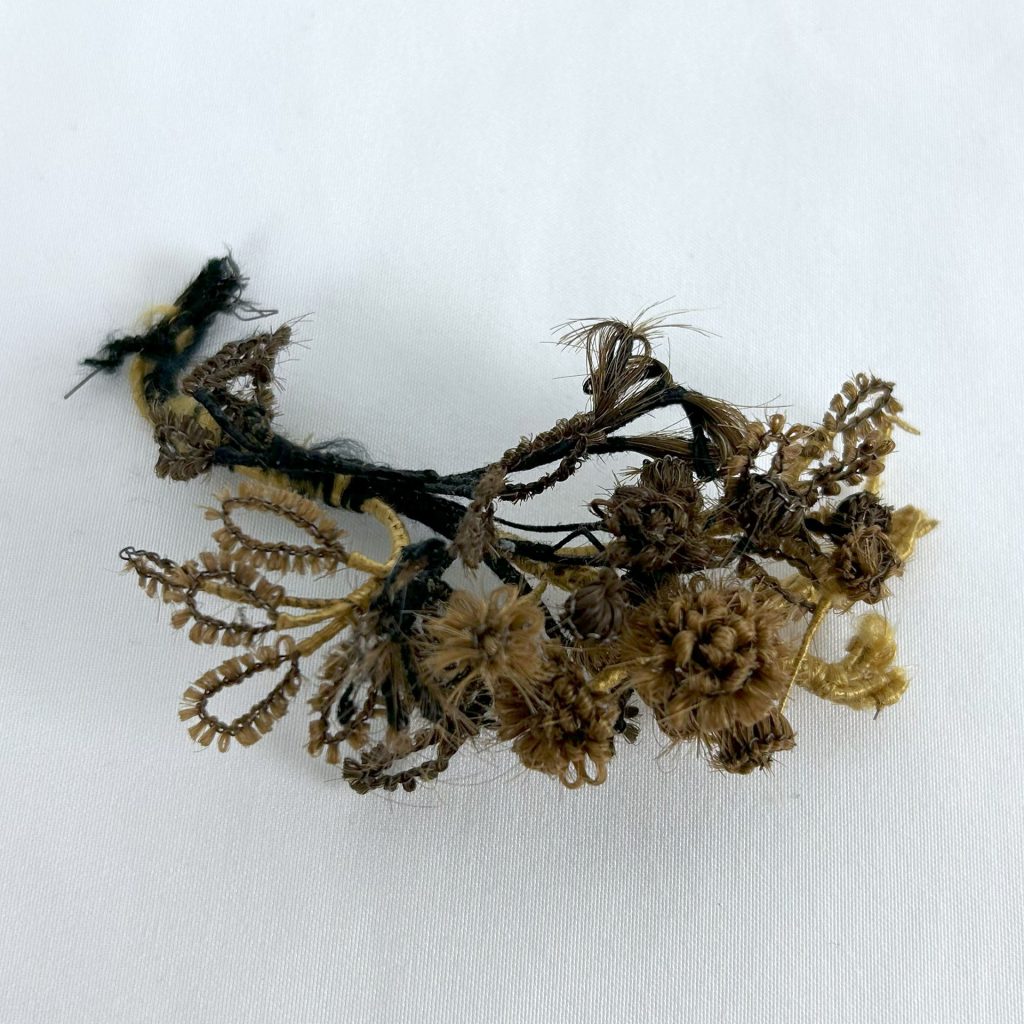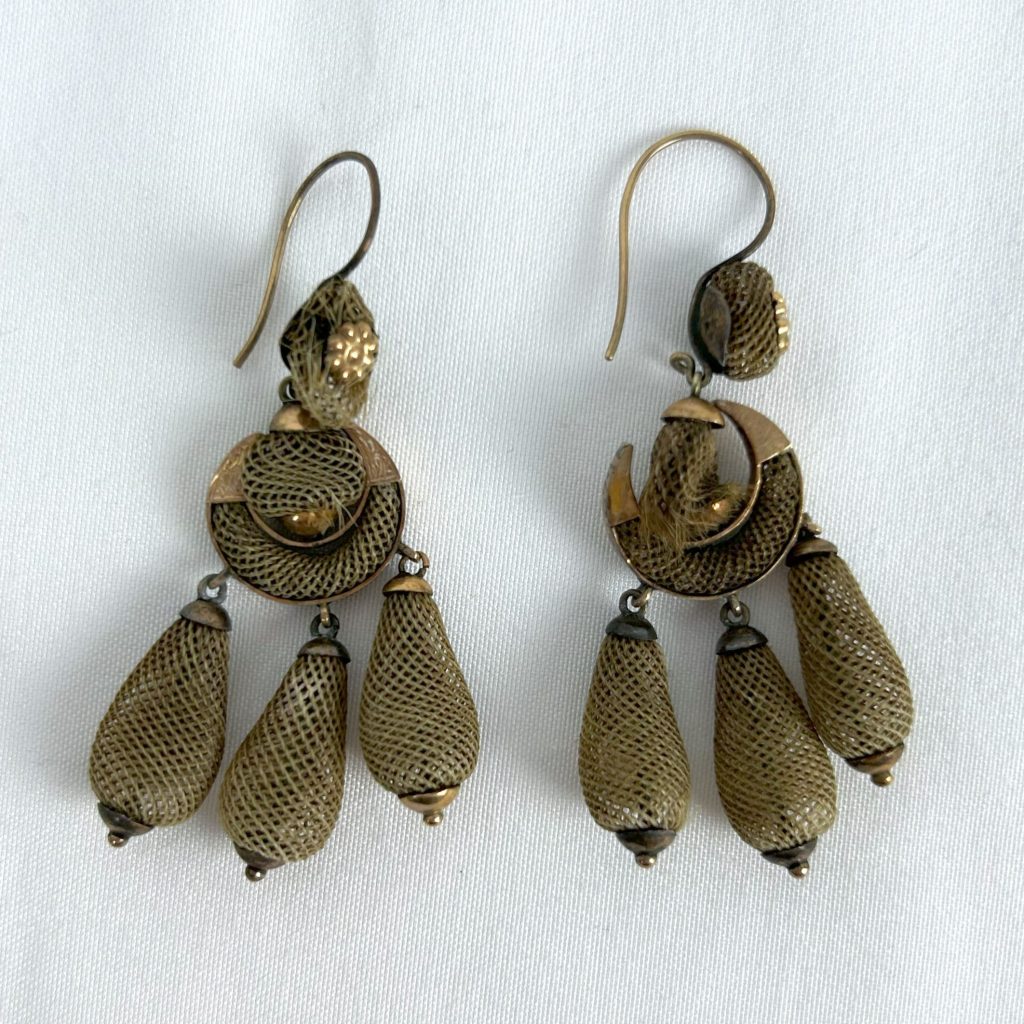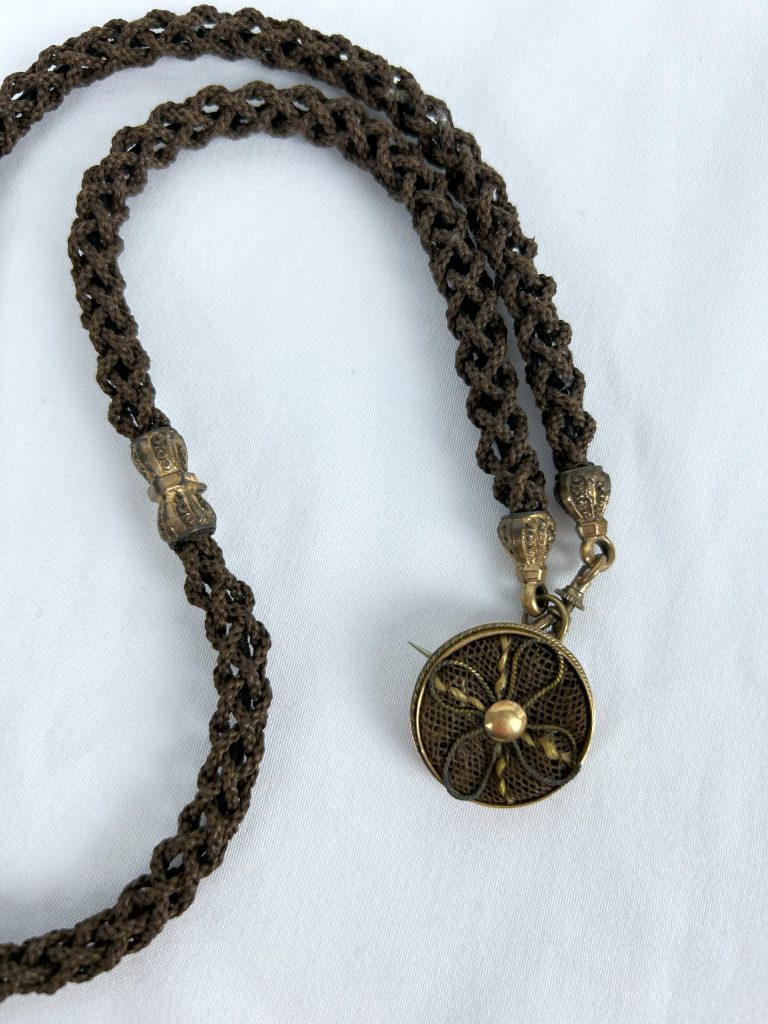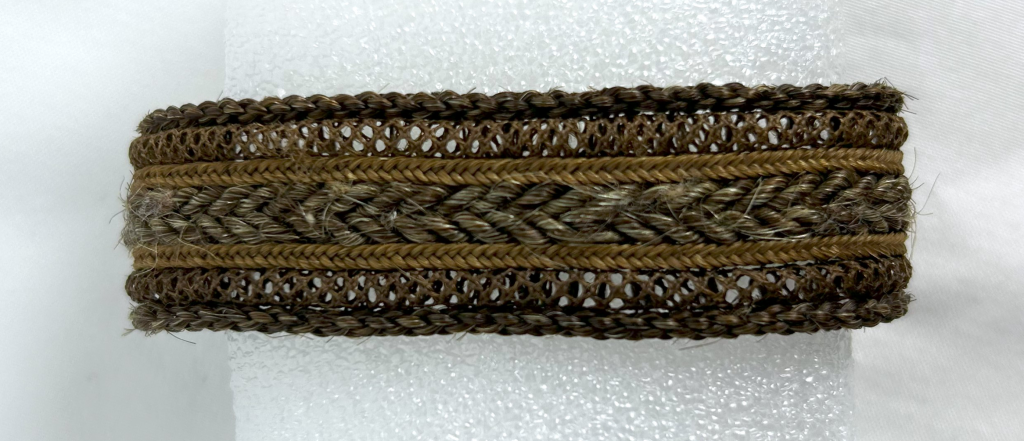Curator Corner: Barbie
Introduced to the market in 1959, the Barbie doll was the first toy aimed at girls that encouraged them to imagine women having careers, rather than just being mothers. Barbie […]

The Collections Program at the Division of Historical and Cultural Affairs holds thousands of stories that can be told through historic objects, some of which are hair jewelry. The practice of making jewelry and decorations from hair has appeared throughout human history, though it is most known today for its association with 19th century mourning practices. In a time before common access to photography, hair art allowed family members to keep a piece of their deceased loved one with them. The tradition was greatly popularized by the Victorians, known for their elaborate mourning culture.

However, hair jewelry was not limited to mourning items. Hair decorations were used as signs of love, between couples, family members, and friends. It was also used because of how pretty the fine fibers of hair could be when woven and braided and how easy hair is to come by. As wigs fell out of fashion, wig-makers began using their experience with hair to craft hair jewelry instead. Hair art, both jewelry and other decorative pieces, could be purchased from professional craftsmen or created at home. The art of crafting hair jewelry is still professionally practiced in Sweden. The following booklet is “The Art of Hair Work” by Mark Campbell and was adapted by Jules & Kaethe Kliot, which shows the types of guides produced during that 19th century.
Hair could be used in different ways on a jewelry item. The most common surviving pieces of historic hair jewelry have the hair safely encased in a locket or brooch, such as those seen here, but there were many other ways hair was used. The following examples from our collection showcase these.



Very common items were braids. Braiding the hair to make a chain, band, or to form into a shape with a mold was done using a hair braiding stand and bobbins. When using a mold to shape hair, there were many options available. Lyres, crosses, berries, and hearts were all popular. The process of setting the hair in the shape of the mold involved boiling it and then drying it in a warm oven.
Another common practice that could be done at home was that of braiding hair wreaths and hair flowers. Multiple family members or loved ones may have their hair formed into colorful bouquets of flowers. This could span generations of a family.
Hair painting involved using small pieces of hair to create a picture, as can be seen in the 18th century brooch. The material used to paint the scene may also be dissolved hair. This is a mourning piece from Georgian times, and is the only example we have in our collections of this type of hair art.
Most historic hair jewelry features brown or blond hair, perhaps dotted with grey. Some more uncommon pieces can feature white hair, because pure white hairs must be selected from all the grey hair.

The Division of Historic and Cultural Affairs’ Center for Material Culture presents Curator Corner, a monthly web periodical featuring various collections objects and their stories. Visit the Collections Program page to learn more.
Introduced to the market in 1959, the Barbie doll was the first toy aimed at girls that encouraged them to imagine women having careers, rather than just being mothers. Barbie […]